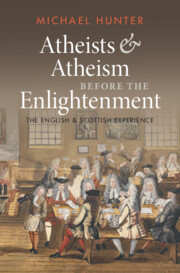195 results
Navigating the challenges of initiating pediatric device trials – a case study
-
- Journal:
- Journal of Clinical and Translational Science / Volume 8 / Issue 1 / 2024
- Published online by Cambridge University Press:
- 13 May 2024, e97
-
- Article
-
- You have access
- Open access
- HTML
- Export citation
Charge Reversal of Kaolinite by Hydrolyzable Metal Ions: An Electroacoustic Study
-
- Journal:
- Clays and Clay Minerals / Volume 40 / Issue 6 / December 1992
- Published online by Cambridge University Press:
- 28 February 2024, pp. 644-649
-
- Article
-
- You have access
- Export citation
Description of the Public Safety Medical Response and Patient Encounters Within and During the Indianapolis (USA) Spring 2020 Civil Unrest
-
- Journal:
- Prehospital and Disaster Medicine / Volume 39 / Issue 1 / February 2024
- Published online by Cambridge University Press:
- 25 January 2024, pp. 73-77
- Print publication:
- February 2024
-
- Article
-
- You have access
- HTML
- Export citation
No Sex Differences in Mechanical Thrombectomy Time Metrics and Outcomes in Saskatchewan
-
- Journal:
- Canadian Journal of Neurological Sciences , First View
- Published online by Cambridge University Press:
- 05 October 2023, pp. 1-6
-
- Article
-
- You have access
- HTML
- Export citation
Chapter 2 - The Problem of ‘Atheism’ in Early Modern England
-
- Book:
- Atheists and Atheism before the Enlightenment
- Published online:
- 06 July 2023
- Print publication:
- 27 July 2023, pp 33-56
-
- Chapter
- Export citation
Copyright page
-
- Book:
- Atheists and Atheism before the Enlightenment
- Published online:
- 06 July 2023
- Print publication:
- 27 July 2023, pp iv-iv
-
- Chapter
- Export citation
Contents
-
- Book:
- Atheists and Atheism before the Enlightenment
- Published online:
- 06 July 2023
- Print publication:
- 27 July 2023, pp v-v
-
- Chapter
- Export citation
Chapter 4 - ‘This degenerate Age … so miserably over-run with Scepticism and Infidelity’
-
- Book:
- Atheists and Atheism before the Enlightenment
- Published online:
- 06 July 2023
- Print publication:
- 27 July 2023, pp 73-93
-
- Chapter
- Export citation
Acknowledgements
-
- Book:
- Atheists and Atheism before the Enlightenment
- Published online:
- 06 July 2023
- Print publication:
- 27 July 2023, pp vi-viii
-
- Chapter
- Export citation
Chapter 3 - Atheism among the Godly
-
- Book:
- Atheists and Atheism before the Enlightenment
- Published online:
- 06 July 2023
- Print publication:
- 27 July 2023, pp 57-72
-
- Chapter
- Export citation
Chapter 7 - The Text of Pitcairneana
-
- Book:
- Atheists and Atheism before the Enlightenment
- Published online:
- 06 July 2023
- Print publication:
- 27 July 2023, pp 144-157
-
- Chapter
- Export citation
Chapter 5 - ‘Aikenhead the Atheist’
-
- Book:
- Atheists and Atheism before the Enlightenment
- Published online:
- 06 July 2023
- Print publication:
- 27 July 2023, pp 94-122
-
- Chapter
- Export citation
Bibliography
-
- Book:
- Atheists and Atheism before the Enlightenment
- Published online:
- 06 July 2023
- Print publication:
- 27 July 2023, pp 190-217
-
- Chapter
- Export citation
Chapter 9 - Conclusion
-
- Book:
- Atheists and Atheism before the Enlightenment
- Published online:
- 06 July 2023
- Print publication:
- 27 July 2023, pp 178-189
-
- Chapter
- Export citation
Chapter 1 - Introduction
-
- Book:
- Atheists and Atheism before the Enlightenment
- Published online:
- 06 July 2023
- Print publication:
- 27 July 2023, pp 1-32
-
- Chapter
- Export citation
Index
-
- Book:
- Atheists and Atheism before the Enlightenment
- Published online:
- 06 July 2023
- Print publication:
- 27 July 2023, pp 218-224
-
- Chapter
- Export citation
Chapter 6 - An Atheist Text by Archibald Pitcairne
-
- Book:
- Atheists and Atheism before the Enlightenment
- Published online:
- 06 July 2023
- Print publication:
- 27 July 2023, pp 123-143
-
- Chapter
- Export citation
Chapter 8 - The Trial of Tinkler Ducket
-
- Book:
- Atheists and Atheism before the Enlightenment
- Published online:
- 06 July 2023
- Print publication:
- 27 July 2023, pp 158-177
-
- Chapter
- Export citation

Atheists and Atheism before the Enlightenment
- The English and Scottish Experience
-
- Published online:
- 06 July 2023
- Print publication:
- 27 July 2023
The FAST VAN for Field Identification of Large Vessel Occlusion in Acute Stroke
-
- Journal:
- Canadian Journal of Neurological Sciences / Volume 50 / Issue 3 / May 2023
- Published online by Cambridge University Press:
- 18 May 2022, pp. 389-392
-
- Article
-
- You have access
- HTML
- Export citation

